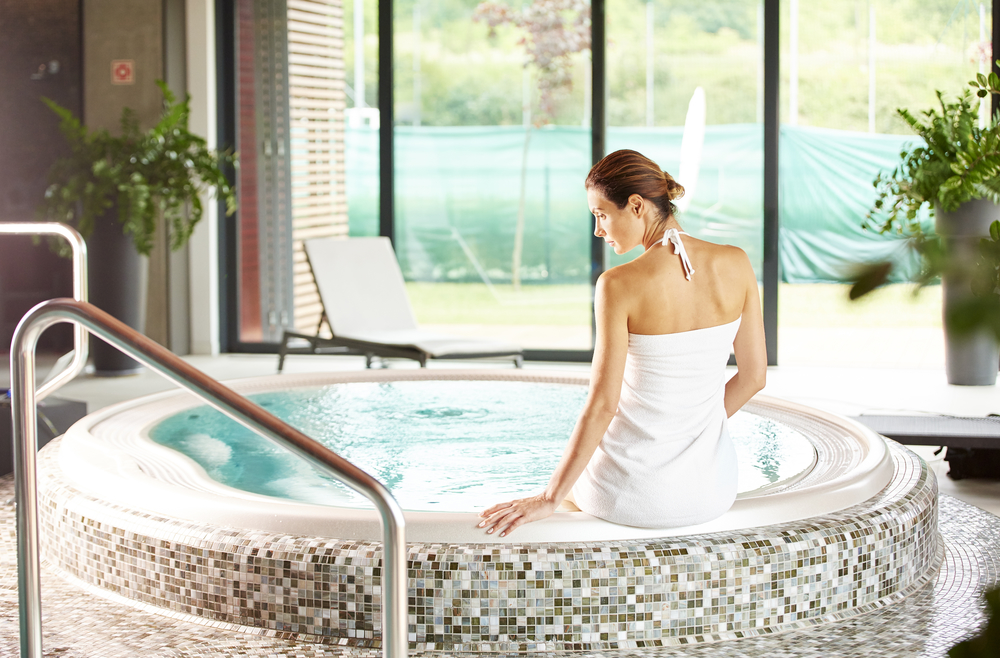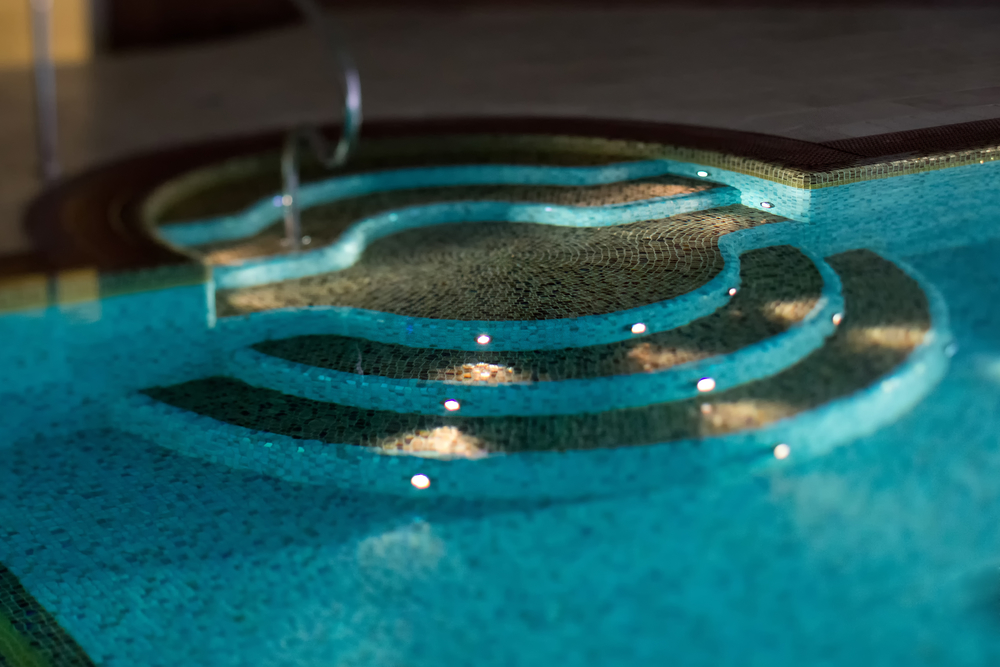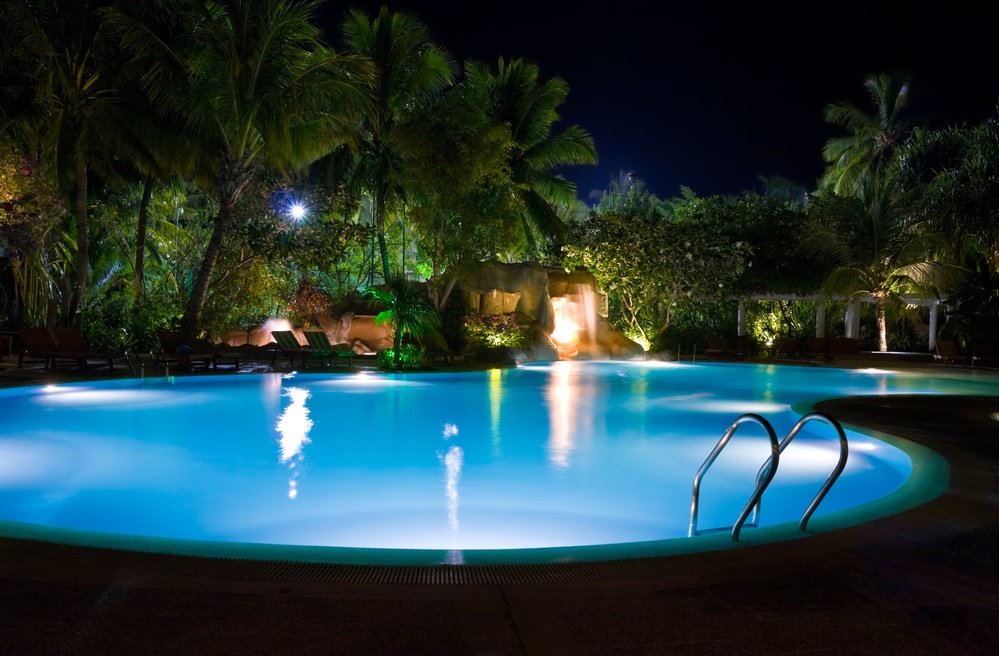You grab your towel and head out toward the hot tub after a long day at work. You’re ready to relax and unwind in the heated water. Once you get out there though, you notice the water looks a little cloudy, not quite as clear and blue as it once was.
Is the hot tub water safe to swim in? When is the last time you checked the water chemistry and added new chemicals. Do you remember the last time the hot tub was drained and fully serviced by a pool maintenance professional? If you have no recollection, you may want to hold off on taking a soak until you’re certain the water is safe for swimming.
As you know, with heated water bacteria grows more quickly and that bacteria can make you ill or lead to dry and itchy skin. It’s best to know for sure that the water is safe than to take a chance on slipping into germy, bacteria-filled water.
Tips For Caring For The Family Hot Tub
 If you’re overwhelmed with the thought of caring for your hot tub or to now trying to figure out exactly what could be wrong with the water, you may want to reach out to a local swimming pool and hot tub service professional. He or she can help you get to the bottom of the issue with the hot tub water and make it safe again for relaxing.
If you’re overwhelmed with the thought of caring for your hot tub or to now trying to figure out exactly what could be wrong with the water, you may want to reach out to a local swimming pool and hot tub service professional. He or she can help you get to the bottom of the issue with the hot tub water and make it safe again for relaxing.
A swimmng pool and hot tub have some major differences — not just in the size, but in the care they require. Swimming pool contractors explain that it’s the temperature of the hot tub and spa that truly sets the pool apart from the hot tub.
When the water in a hot tub ranges between 102 and 104 degrees and a swimmng pool can range from between 80 and 86 degrees, the water temperature difference is what leads to the difference in the way the water is cared for and the chemicals necessary to keep it safe for soaking.
Hot tub water chemistry. You may have mastered the water chemistry for your swimming pool, but have you mastered the chemistry for the hot tub? In addition to the heat aspect, the lower volumer of water in the spa also means you need to adjust the amount of chemicals you use in the water to keep it bacteria-free.
Here are some of the chemicals you need to test and what they do to keep the hot tub water clean and healthy for you to use.
Sanitizers. The sanitizer you use in the hot tub or spa is one of the most critical chemicals and it is also the trickiest to get balanced. A sanitizer disinfects the water and keeps it smelling fresh. If there is too much sanitizer in the pool you will experience dry, itchy skin and rashes and eye irritation. If the sanitizer level is too low, the water will quickly become a breeding ground for bacteria, mold, algae and other harmful micro-organisims.
Check out the varieties of sanitizers when you’re at your pool supply store. You’ll see the most common ones are bromine and chlorine. Pool contractors explain the average reading for chlorine in the hot tub is between 1.5 and 3.0 parts per million; bromine readings should be between 3.0 and 5.0 ppm. Check these levels with a water test kit you can get from your pool contractor.
Total alkalinity and pH. pH and total alkalinity directly impact one another. When trying to understand alkalinity you’re looking at the total alkaline in the water and the pH lets you know whether your hot tub water is “basic” or “acidic.” The higher the pH the more alkaline you have in the hot tub water.
pH and total alkalinity levels are tested wtih test strips in a water test kit. Spa water should have a pH level between 7.2 and 7.8. If the spa water’s pH level is lower than this the spa water is too acidic; this can lead to eye irritation, dry skin and more importantly acidic water can corrode the spa equipment.
If the pH is too high, the water can quickly turn cloudy and your spa filter will need to work harder.
 Keeping total alkalinity levels between 80 and 120 ppm will help keep the hot tub’s pH levels in acceptable ranges.
Keeping total alkalinity levels between 80 and 120 ppm will help keep the hot tub’s pH levels in acceptable ranges.
Calcium Hardness. When you add water to your hot tub from the hose, you’re impacting your spa’s water chemistry — typically in a negative way. In some areas of the country you will have “hard water” this is water that has high levelss of magnesium, iron and calcium. When you fill your hot tub with this water you can see scales forming on the spa walls and the water will be cloudy.
Ideal calcium levels are between 100 and 250 ppm, if the spa has an acrylic finish, and 250 and 450 ppm for a plaster-finished spa. Add a water softener if the calcium levels get too high.
Super chlorinating also known as shocking. There will come a time when you simply need to super chlorinate the hot tub water in order to kill off all of the chemicals and get it back to “zero.” When you super chlorinate the spo water you are breaking down all of the bacteria in the spa water that is unable to be broken down by the filter or the chemicals in the pool. No matter how clean you keep the water, it will eventually be impacted by:
- Dead skin cells
- Hair spray
- Deodorants
- Perfumes
- Perspiration
- Soap and loltion
- Other organic matter
These items build up on the water and can serve as a food source for bacteria.
When shocking the hot tub water, keep the spa cover off for at least twenty minutes to preent any kind of build up of fumes from the chlorine you’re using to shock the water.
Bottom line on spa water care
These are just the basics on spa and hot tub water care. Give your local swimming pool and hot tub service contractor a call and ask him to clean and maintain your hot tub or ask for a training session on how you can test and understand the readings yourself.
Keep in mind that the heat of the water in your hot tub will help bacteria grow even more quickly and this could be hazardous to your health.

